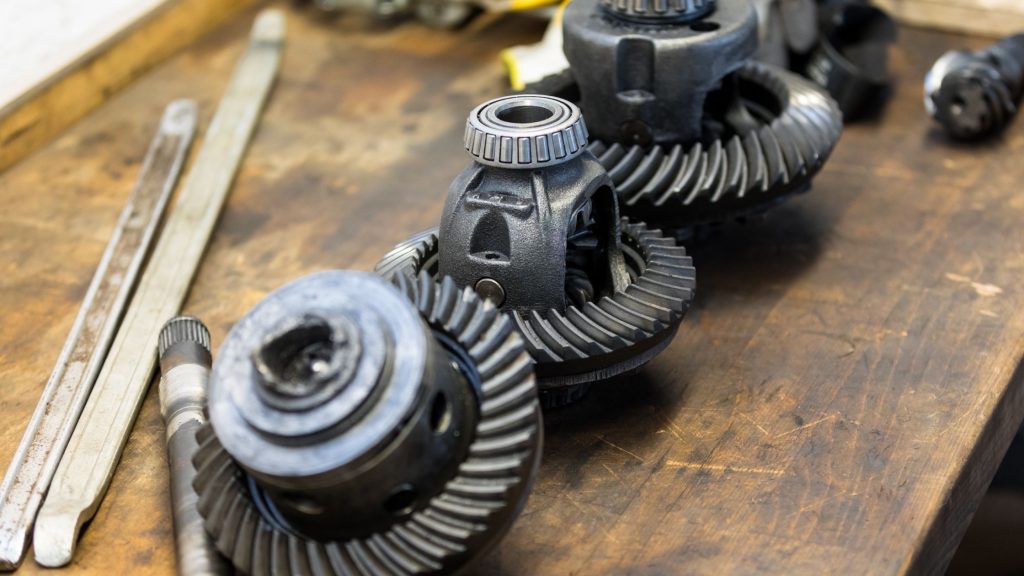It is quite possible to go off-road or in the mud with a 2WD truck or SUV. Before taking on some muddy trails in a 2WD, there are a few things to keep in mind.
Can I go Mudding With a 2WD
Go mudding and driving through patches of mud on some trails are two very different things.
However, while it may not be ideal, it is possible to go mudding in a 2wd. However, this would require a specially equipped vehicle, the sort that may not be suitable for the road.
To go mudding in a 2WD vehicle would require quite aggressive Mud Terrain tires. These tires are not suitable for highway driving and, in some situations, can become dangerous if used on the road.
How to Improve Traction 2WD
There are a few things you can implement to improve the traction on your 2WD truck.
The first and most obvious option is to upgrade your tires. Depending on the type of terrain you are taking on and what you want to improve your traction for will determine the type of tire to upgrade to.
If you are overlanding or do occasional trailing on the weekend but still want to travel on highways, you may want to look at All-Terrain tires.
If you are spending a lot of time off-road or overlanding remote areas, you could look at mud-terrain tires. The more challenging the terrain, the more aggressive you can get with your choice of tires.
Another option for improving traction is the size of the tire you choose. I like to choose a tall tire for mud; when I lower the tire pressure, I get a longer footprint to pull me out of the mud.
Another benefit of choosing a taller tire is that it can dig through the sloppy stuff on top and reach the solid stuff beneath. This only works if you are not in an endless mud pit or sand. If you are in an endless mud pit a wider tire or longer footprint works best.
Diff Upgrade
Depending on your use of the vehicle, you could consider upgrading your diff for improved traction on your 2WD. This is also vehicle-specific. You may find that upgrading to a LSD or even a locking diff will greatly improve the traction of your 2WD.
However, some locking and LSD’s reduce the road manners of a vehicle, so choose carefully.
How to Drive in Mud With 2WD
Sometimes driving in mud can be challenging enough with a 4WD vehicle, so it’s safe to assume that it’s even more challenging in a 2WD.
With that being said, with good preparation, it’s possible to drive through mud in a 2WD.
Preparation
The first step is to make sure you are thoroughly prepared to drive in mud. Not any vehicle can drive in mud; most vehicles require upgrades or modifications to drive in mud.
Is your vehicle equipped with a rescue kit? This is important should you get stuck.
Do you have a winch installed? While this is not entirely necessary, it is highly recommended, especially for a 2WD vehicle that has a bigger chance of getting stuck.
Have you got appropriate tires for the task at hand?
Do you have a phone signal and a number to call for help?
All these things should be taken care of before attempting to take your 2WD through mud.
Approach

Once you are prepared and the mud is in front of you, you have to think about how you plan to tackle it, this is called choosing a line.
The line you choose could be the difference of you making it through the mud or not.
While it might be tempting to just floor it and go straight through the center, this could be a costly mistake.
- The first step should be to inspect the obstacle on foot. Walk out and have a close look at the mud. Take a long stick and gauge the depth. Look for ruts where vehicles have been through previously, try and locate some dry ground around the mud.
Once you are satisfied that the mud is not too deep and there are no ruts that will pull you in you can begin choosing your line.This step is important as your vehicle may not go in the direction you want if you ignore this step. If the mud is on a slope, your vehicle may start sliding down once you get into it. - Lower your tire pressure. As we have mentioned above, it’s important to create as much of a footprint as possible. This gives your tire more surface area to cover, improving your overall traction.
- Once you have chosen your line, you are ready to go. If you have a locking differential, now is the time to lock it as you don’t want to be slowing down in the mud; however, if you have an air locker, you won’t need to slow down to lock it. This is a considerable difference between an air locker and E locker.
- If you have traction boards, you could also lay a few of them out to help you across the mud. However, if the mud does not look too difficult you could skip this step.
- As you drive towards the mud, it’s important to keep momentum, in a 2WD, momentum is your best hope of getting through the mud successfully. Not only will momentum propel you forward it will also help clear your wheels of mud which is crucial for traction.
Keep in mind there is a big difference between keeping up momentum and spinning your wheels. It’s very important you avoid spinning your wheels as this will only increase your chances of spinning out of control or digging down into the mud. - Avoid excessive steering of the wheel. Oversteering can cause your vehicle to slide out of control and leave you in a very difficult situation. Make small corrections with the steering wheel to keep on your chosen line.
Getting Unstuck
It’s inevitable that if you spend enough time driving through mud, you will get stuck at some time. This even happens to me with three differentials and mud tires.
Being prepared in this situation is what will make all the difference. A fully-equipped recovery kit should help you get out of the mud effortlessly.
Unfortunately, you’re going to have to get muddy in these next few steps, but it’s all part of the experience.
- The first step is to use your recovery shovel and clear any mud from under the vehicle and around the tires.
- Next is to dig a small clearing in front of all your tires place your traction board in front of your tires. As this is a 2WD vehicle, if you only have two traction boards, you need to place them in front of the tires with the drive. If your vehicle is a rear-wheel drive, you would place them in front of the rear wheels and place them in front of the front wheels if your vehicle is front-wheel drive.
- Slowly drive up onto the traction boards and hopefully out of the mud. In most cases, traction boards are enough to get you unstuck from the mud regardless of whether you have 2wd or 4wd.
- If you still are not unstuck from the mud, it’s time to start using the rest of the equipment in your recovery kit. If you have a winch installed, this will successfully see you out of the mud.
- If you don’t have a winch installed, you can use the recovery straps in your recovery kit and have someone tow you out of the mud.
Conclusion
If you have a 2WD truck or SUV don’t let that limit you in your overlanding or off-road adventures.
Regardless of whether you have 2WD or 4WD there is plenty of exploring out there, and most vehicles are capable of lighter trails and even moderate trails with some upgrades.
As we’ve explained above a 2WD is capable of going off-road and through mud.
With careful planning and preparation, there are many things you can do in your 2WD vehicle.
- Tips and tricks For Setting Up Camp Like a Pro - September 11, 2023
- The Best Multi-Tools for Overlanding Adventures - August 25, 2023
- Off-Road Navigation Tips for Overlanders - August 13, 2023



